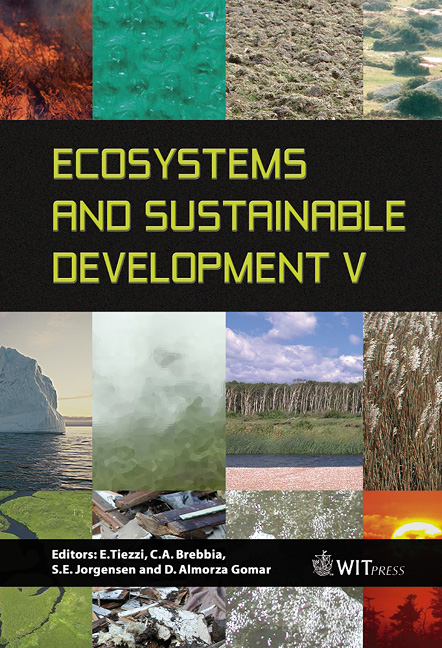Quantifying Possible Pathways Of Sustainable Development Of A Territorial System
Price
Free (open access)
Transaction
Volume
81
Pages
6
Published
2005
Size
307 kb
Paper DOI
10.2495/ECO050041
Copyright
WIT Press
Author(s)
S. Bastianoni, N. Marchettini & R. Ridolfi
Abstract
The assessment of the environmental sustainability of a territorial system requires a holistic approach, based on thermodynamic functions and able to consider all the complex mechanisms that are involved in a system. Many of the most used indicators focus their attention on single aspects, and they are not able to consider the system as a whole. Some authors have developed the use of different indicators such as emergy analysis and greenhouse gas inventory. The first methodologies point out their attention on the resource use. In particular, the Emergy Analysis measures the quantity and type of resources necessary to sustain the system. Greenhouse gas inventory is directly focused on the indirect impact of the system, i.e. the CO2 equivalent emissions produced. These methodologies have already been used in order to assess the sustainability of a territorial system while the suggested strategies and pathways for sustainability still need investigation. It is in fact very important to test if and how these methodologies are able to assess these possible paths of sustainability and to measure quantitatively the choices made. The case study is the Province of Grosseto. The different indicators (emergy analysis and greenhouse inventory) define the Province of Grosseto as a system that makes a low impact on the territory. In this paper we formulate possible scenarios of sustainable development and we quantify how these developments affect indicators. Keywords: sustainable pathways, emergy analysis, greenhouse gas inventory, territorial system, hydrogen production.
Keywords
sustainable pathways, emergy analysis, greenhouse gas inventory, territorial system, hydrogen production.





